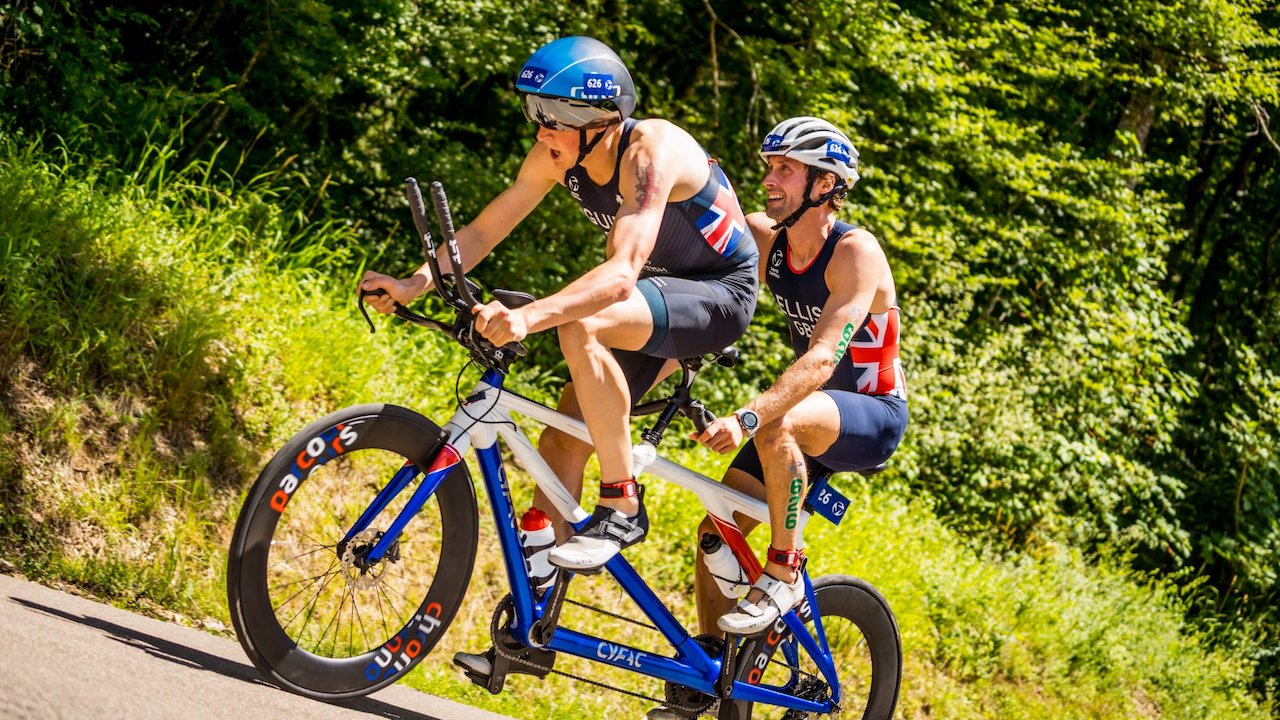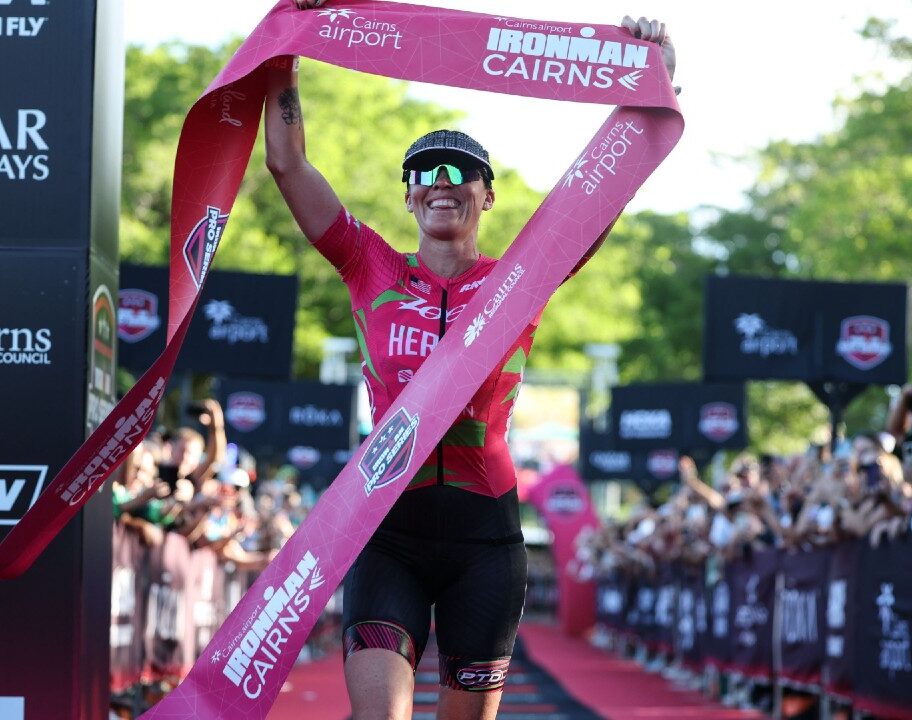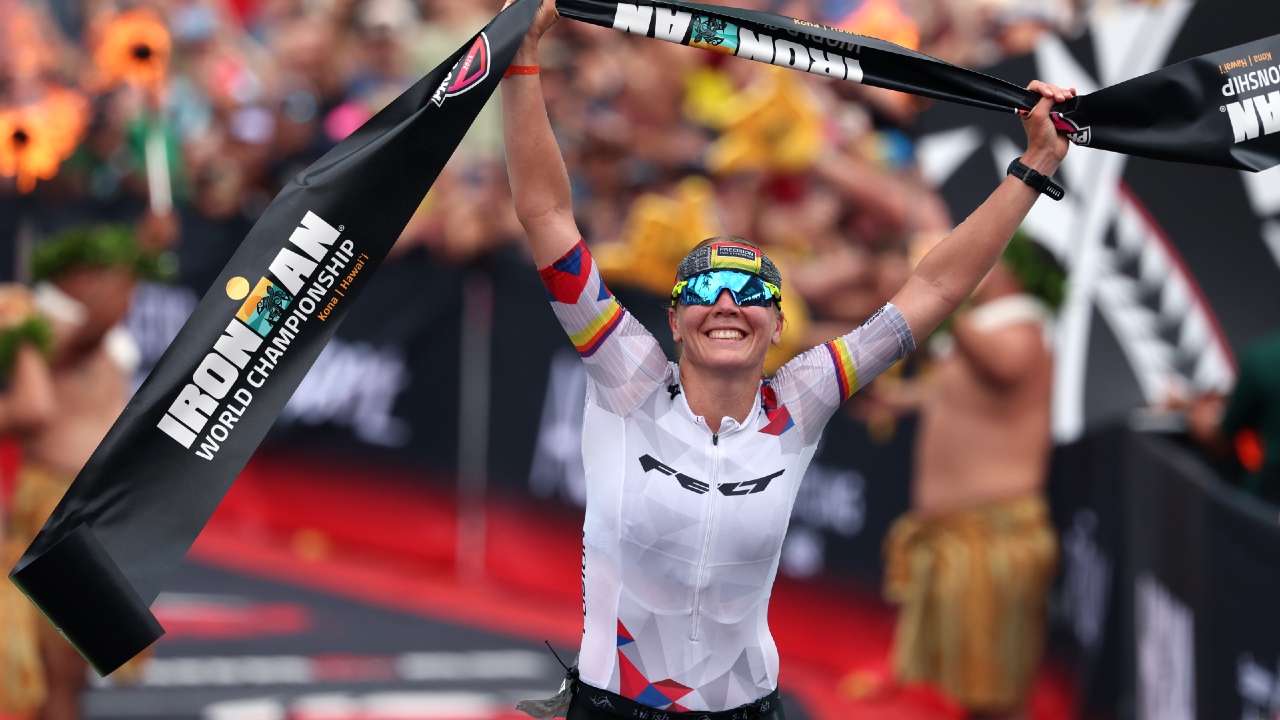Have you been missing Paris after those amazing Olympics? Well, your prayers have been answered as today (Wednesday August 28) will see the opening ceremony of the 2024 Paris Paralympic Games.
It’s another key moment for the sport of triathlon, with the Games featuring para triathlon racing for only the third time. The 11 events cover all of the of the para triathlon sport classes / categories.
As with the Olympics, the Paralympics brings in a huge number of additional eyes to the sports on its schedule, and with that comes a degree of explanation of the categories within which the athletes compete. So, how does this work in para triathlon?
Here is your one-stop-shop for the basics you need to bring you up to speed, and hopefully enhance your Paris 2024 para triathlon viewing experience.
Distances
Before I explain those categories, this is one element which remains constant.
All athletes, across all sport classes and genders, will race over the same sprint distance course. That comprises of a 750m swim in the Seine, a multi-lap 20km bike course and finishing with a 5km run, again raced over multiple laps. The racing is in non-drafting format.
These distances are in line with international triathlon competition at the likes of the World Championships, European Championships and Commonwealth Games, plus the World Triathlon Para Series and World Triathlon Para Cup races which were the routes by which athletes earned their qualification slots for Paris
Standing Categories (PTS2 / PTS3 / PTS4 / PTS5)
The para triathlon racing at the Paralympic Games takes place (we hope) on Monday September 2, 2024.
First we look at the standing (also known as ambulant) categories. There are four sport classes (PTS2 / PTS3 / PTS4 / PTS5). The ‘PTS’ signifies ‘para triathlon standing’, with the number representing the degree of impairment of athletes in that class. The lower the number, the higher the degree of impairment.
All of the athletes racing will have been formally classified via a World Triathlon designated Classification Panel, and full details of that process can be found here.
One of the key things to note here: is that it is the impact of the impairment “to the extent of activity limitation they cause the athlete when performing in the sport of para triathlon”, NOT the type/nature of that impairment(s) that determines which sport class an athlete races in.
A great example of this is one of the close races we expect to see next week. In the Female PTS5 category, British athletes Lauren Steadman and Claire Cashmore have a similar disability (one missing forearm), but their closest rival, the USA’s Grace Norman, has a lower leg amputation. Different backgrounds… but always incredibly close and competitive racing!

For all of the PTS standing/ambulant categories, the following applies:
In both bike and run segments, amputee athletes may use approved prosthesis or other supportive devices. Includes athletes with comparable activity limitation and an impairment of, but not limited to, limb deficiency, hypertonia, ataxia and or athetosis, impaired muscle power or range of movement.
The key difference – and these are the official ‘Laymen’s terms’ used by World Triathlon – are the degrees of impact, as determined by the formal classification process:
- PTS2 – Severe impairments
- PTS3 – Significant impairments
- PTS4 – Moderate impairments
- PTS5 – Mild impairments
Note: The only sport class that does not feature on the Paris 2024 schedule is for PTS3 Women. However, the PTS4 start list is expanded to includes five athletes “classing up”, so there will be 15 starters in that W-PTS4 event.
Visually Impaired (PTVI)
Next up we run the rule over the visually impaired (PTVI) category.
Not all athletes will start together, as the degree of visual impairment of the athletes will determine how the race actually starts. This is World Triathlon’s ‘Interval Start System’.
Athletes who are categorised as PTVI B1 (athletes from totally blind, to some light perception) will start first. Athletes categorised as PTVI B2 (severe partially sighted) and PTVI B3 (less severe partially sighted) will then start together, with a pre-determined offset time relative to the PTVI1 athletes.
For the men this is 2min 41 seconds and for the women this is 3 mins 11 seconds.
The medal order will be reflected by the order crossing the finish line. Thus, while there is sub-division with the sport classes (1/2/3), there is one PTVI medal event per gender.
Applying that to a practical example: Antoine Perel (FRA) is a ‘B1’ athlete, and he will be one of the athletes who starts first. The ‘race time’ starts for everyone, even those at that point waiting on the swim pontoon. 2min 41 seconds later, athletes including Great Britain’s Dave Ellis (a ‘B3’ athlete), will then start. This allows the B1/B2/B3 athletes to compete for one PTVI medal event.

Visually impaired athletes complete the entire race alongside a guide:
In the swim, the athlete must be tethered to their guide by way of an elastic rope, which must be bright or reflective in colour, up to 80cm long with no tension. The guide cannot ‘propel, push or pull’ the para triathlete in order to gain an unfair advantage
The bike section is completed on a tandem bicycle.
During the run, the athlete must be tethered to their guide. While the guide may assist an athlete who has tripped or fallen, they cannot push, pull or otherwise propel the athlete at any stage.
At the finish, the guide must be beside or behind the para athlete, but no further than the 0.5 metres maximum separation distance.
Wheelchair (PTWC)
Also racing at the Paris Paralympic Games will be the PTWC wheelchair athletes.
The ‘wheelies’ race alone through the entire race, and after completing the swim they will transfer to a ‘day chair’ to more from pre-transition into T1. This may be with the assistance of a dedicated personal handler, who is also subject to World Triathlon rules. The handler can help the athlete in and out of handcycle / wheelchair and removing wetsuits for example, but any action which helps propel the para triathlete forward may result in disqualification.
Athletes must use a recumbent handcycle on the bike course and a racing wheelchair on the run segment; Includes athletes with comparable activity limitation and an impairment of, but not limited to: muscle power, limb deficiency, hypertonia, ataxia or athetosis.

In a similar manner to the PTVI format described above, there is also an Interval Start System in place for the PTWC events.
Athletes are categorised as PTWC1 (most impaired wheelchair users) or PTWC2 (least impaired wheelchair users), but will race in one medal event.
The interval times for the PTWC races are 3 minutes exactly for the men, and 3 mins 38 seconds for the women.
Another practical example. At the Tokyo Paralympic Games, Australia’s Lauren Parker (PTWC1) started first, with Kendall Gretsch (PTWC2) following in that second start. The U.S. athlete was then chasing the long-time leader for the entire race, before making the pass to take gold, literally within the final five metres, in one of the greatest sprint finishes in para triathlon history.

Paris 2024 Paratriathlon Medal Events
In you are new to para triathlon or perhaps needed a little refresher, hopefully this guide has helped inform you of some of the key points to look out for. Here’s a final summary of the medal event you can follow, on what is sure to provide some brilliant racing:
| Category | Description ** | Men | Women |
| PTWC | Wheelchair | Included | Included |
| PTS2 | Severe Physical impairment | Included | Included |
| PTS3 | Significant Physical Impairment | Included | EXCLUDED |
| PTS4 | Moderate Physical Impairment | Included | Included |
| PTS5 | Mild Physical Impairment | Included | Included |
| PTVI | Visually Impaired | Included | Included |
(** Note ‘layman’s terms’ used above for brevity and clarity – full details of the World Triathlon Paratriathlon categorisation methodology can be found HERE).







![Caroline Livesey wins the first ever Scottish National Gravel Championships in August 2025. [Photo credit: Outsider Events]](https://www.tri247.com/wp-content/uploads/2025/11/Caroline-Livesey-scots-national1.jpg)













